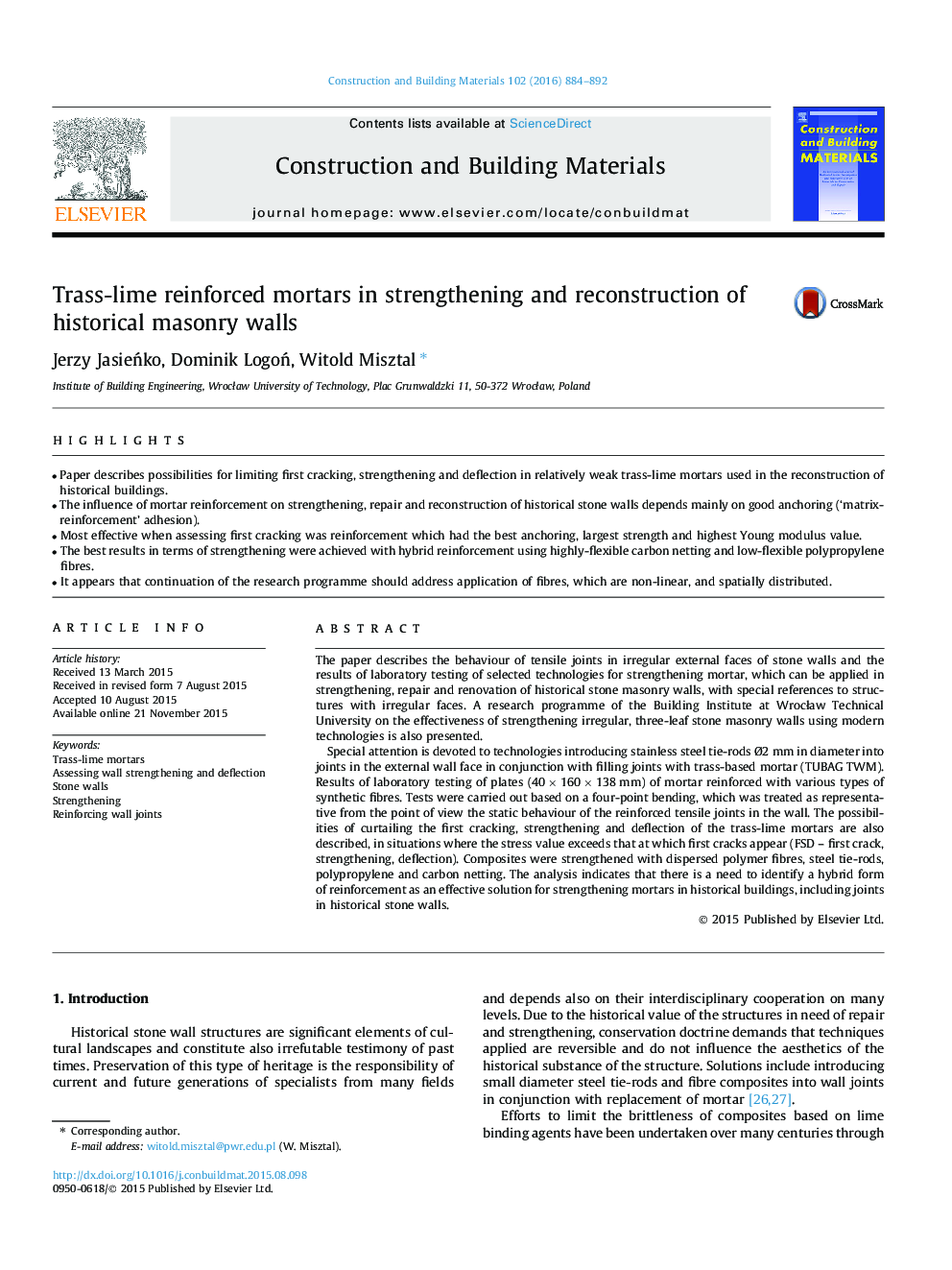| Article ID | Journal | Published Year | Pages | File Type |
|---|---|---|---|---|
| 10285118 | Construction and Building Materials | 2016 | 9 Pages |
Abstract
Special attention is devoted to technologies introducing stainless steel tie-rods Ã2Â mm in diameter into joints in the external wall face in conjunction with filling joints with trass-based mortar (TUBAG TWM). Results of laboratory testing of plates (40Â ÃÂ 160Â ÃÂ 138Â mm) of mortar reinforced with various types of synthetic fibres. Tests were carried out based on a four-point bending, which was treated as representative from the point of view the static behaviour of the reinforced tensile joints in the wall. The possibilities of curtailing the first cracking, strengthening and deflection of the trass-lime mortars are also described, in situations where the stress value exceeds that at which first cracks appear (FSD - first crack, strengthening, deflection). Composites were strengthened with dispersed polymer fibres, steel tie-rods, polypropylene and carbon netting. The analysis indicates that there is a need to identify a hybrid form of reinforcement as an effective solution for strengthening mortars in historical buildings, including joints in historical stone walls.
Keywords
Related Topics
Physical Sciences and Engineering
Engineering
Civil and Structural Engineering
Authors
Jerzy JasieÅko, Dominik LogoÅ, Witold Misztal,
